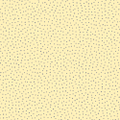Tag:natural=beach
 |
| Description |
|---|
| Landform along a body of water which consists of sand, shingle or other loose material. |
| Rendering in OSM Carto |

|
| Group: natural |
| Used on these elements |
| Useful combination |
|
| See also |
| Status: de facto |
| Tools for this tag |
|
The natural=beach tag is used to mark a loose geological landform along the coast or along another body of water consisting of sand, gravel, shingle, pebbles, cobblestones or sometimes shell fragments etc.
- For seaside resorts use
leisure=beach_resortfor the boundary of the resort, which may include accommodation and other facilities and which may include one or more actual beaches. - For areas of sand that are not beaches, use
natural=sandorsurface=sand(or a more specific tag describing the area).
How to map
It can be mapped as a node (if there is no way to map it as a geometry), especially when someone wants to map name or some other additional properties. But mapping as an area is strictly preferable.
The upper limit of a beach is where the loose sand or stones end or where they are no more shaped by the water waves - whichever comes first. There is no firm rule about the lower limit. Mappers either map the beach down to the mean high water (springs) line (natural=coastline) or to the edge of a lake or similar. Or the beach is mapped up to the low water line (in which case the beach crosses the coastline). Some mappers also split the beach into a part above and below the high water line and tag the lower part tidal=yes (but it is not recommended, see below).
natural=beach should only be used for inclined, wave formed areas at the coast. Larger flat areas of sand that are exposed at low tide should be tagged natural=sand + tidal=yes (and for muddy areas only, use tags natural=wetland + wetland=tidalflat).
Use name=* to give the name of the beach, surface=* to define the surface formation (sand, gravel, pebbles, stones, shells).
If there is someone who manages the beach itself, you may add supervised=yes/no/interval (with the last value, add opening_hours=*).
If there is a lifeguard ensuring the safety in water from a specific structure (a tower for example), you may add a node (or a way) with emergency=lifeguard (if the lifeguard is on duty at specific times, use opening_hours=* on this node/way). If they are mobile (no specific structure), add lifeguard=yes to the beach itself (if the lifeguard is on duty at specific times, use opening_hours:lifeguard=* to the beach (instead of opening_hours=*) not to be confused with the open_hours of the beach itself). If there are no lifeguard in the area, you may add lifeguard=no to be clear.
Photo examples
Rendering
Mapping path/track using beach as its part
Discussed for example at
- https://www.mail-archive.com/talk-au@openstreetmap.org/msg09528.html
- https://www.mail-archive.com/tagging@openstreetmap.org/msg41293.html
- https://www.mail-archive.com/talk-au@openstreetmap.org/msg11443.html
- https://www.mail-archive.com/talk-us@openstreetmap.org/msg13183.html
- https://lists.openstreetmap.org/pipermail/talk-au/2019-July/012759.html
From these discussions and actual mapping, it seems that there are two schemes in use.
Mapping the beach edge
If the beach is wide or there is no clear path indicated, combined with no close path next to the beach (e.g. a dike), people tag the land inward edge of a beach as a path or track (whichever seems appropriate given the beach use).
Some examples can be seen here or here.
Mapping a path/road on the beach
If the beach is not really considered a pass through, but a relevant path only covers a small section of the beach (e.g. as part of a larger trail), it can be more clear and visual to map the path on the beach.
Examples can be found here.
Related
sport=swimmingsport=surfingnudism=yes/no/customary/permissive/obligatorydog=yes/no, etc. (see Animals)emergency=lifeguardlifeguard=*swimming=*amenity=showeramenity=dressing_room
See also
natural=shingle- deposits of pebbles and gravel along rivers and beachesnatural=coastline- used for ocean coastlinesnatural=stone- big bouldersnatural=bare_rock- solid rock areasnatural=cliff- Beach on Wikipedia
- Swimming and bathing
Possible tagging mistakes
| ||||||||||||||||||||||||||||||||


